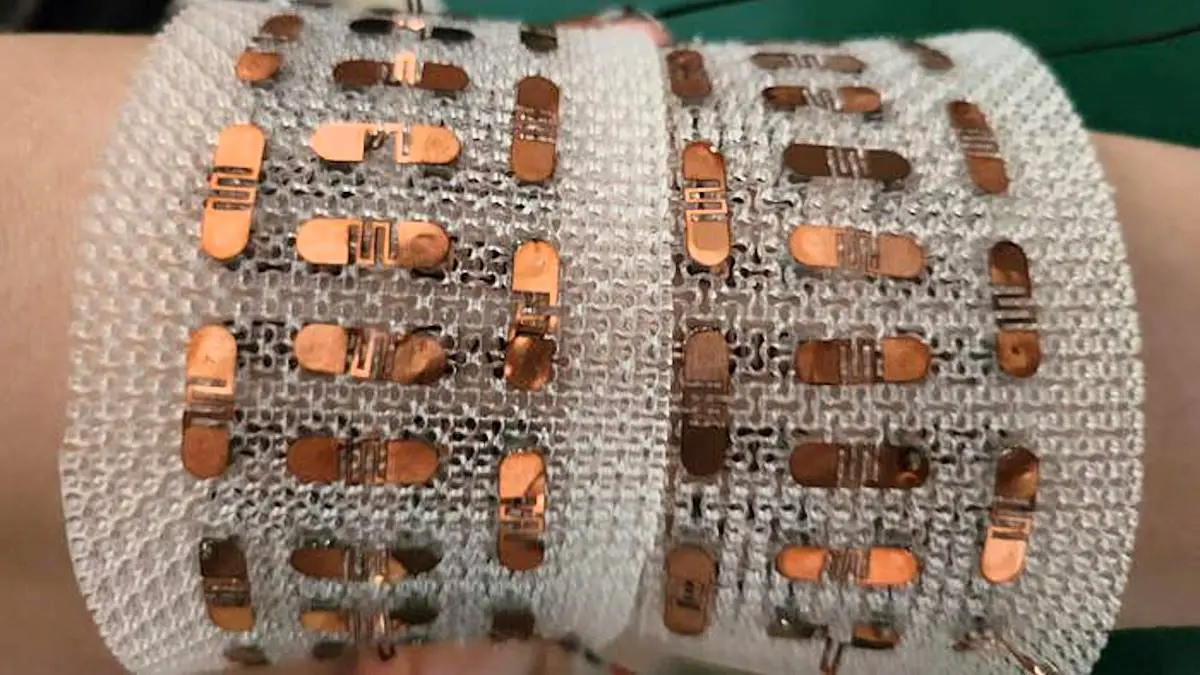A team of researchers from Korea (KERI) has developed a technology that could change the future of thermoelectric generators. Using “mechanical metamaterials”, they managed to increase the flexibility and efficiency of these generators to a level never before achieved.
Mechanical metamaterials are man-made materials designed to stretch in both directions, horizontal and vertical, when stretched horizontally. This is a property that does not exist in natural materials, where the material typically shrinks in the vertical direction when it is stretched in the horizontal direction. These metamaterials they have a negative Poisson’s ratio, which makes them unique.
Team Dr. Hyekyoung Choi and Min Ju Yun did it increase the flexibility of thermoelectric generators by up to 35% using ‘joint’ with metastructure.
A thermoelectric generator converts the temperature difference between the two ends into electrical energy. It is considered a new generation of green energy harvesting device because it can use the heat that is wasted in everyday life as electricity.

Overcoming the challenges of thermoelectric generators
Until now, most thermoelectric generators have been used PCB made of hard ceramics, which made it difficult to apply them to curved surfaces such as leather or hot water pipes. To solve this problem, flexible materials such as silicon and polymers were used as carriers, but high thermal conductivity was a problem.
The deformable joint used by Dr. Hyekyoung Choi has a metastructure that greatly increases the structural stability of a thermoelectric generator. It can be made into various shapes, stretches well like human skin and can be easily attached anywhere.
In addition, the partial air space inside the joint has excellent insulating properties, preventing heat loss and ensuring the efficiency of the thermoelectric generator by increasing the temperature difference by up to 30% compared to existing flexible thermoelectric generators.
Unrivaled performance
THE thermoelectric generators KERIs are scalable up to 35% or more, and the power generation density is more than 20 times higher (0.1μW/cm2 ⇒ 2~3μW/cm2). Although the thermoelectric generator module is greatly expanded, there is almost no deterioration in the electrical characteristics.
This scalability and efficiency are the highest in the world. The research team achieved a durability that allows the generator to maintain its performance without loss even after more than 10,000 repeated bends.
Synthetic
This achievement is likely to gain a lot of attention in IoT and AI-based wearables. Existing wearables had the disadvantage of having to have a separate power source such as a battery, but with KERI’s thermal energy harvesting technology, they can simply be attached to the body and generate electricity using body heat, and even supply power directly through the module. It can also be applied to the next generation medical field.
For better understanding
What is a mechanical metamaterial?
A mechanical metamaterial is an artificial material designed to expand in both directions, horizontal and vertical, when stretched horizontally. This is a property that does not exist in natural materials.
What is a thermoelectric generator?
A thermoelectric generator is a device that converts the temperature difference between two ends into electrical energy. It is considered a new generation of green energy harvesting device as it can use the heat that is wasted in everyday life as electricity.
What makes KERI thermoelectric generators unique?
KERI thermoelectric generators are expandable by up to 35% or more and the power generation density is more than 20 times higher than traditional generators. In addition, they maintain their performance without loss even after more than 10,000 repeated flexions.
What are the advantages of wearable devices using KERI technology?
Wearable devices using KERI’s thermal energy harvesting technology can be easily attached to the body and generate electricity using body heat and even deliver power directly through the module. They do not need a separate power supply like batteries.
What are the potential applications of this technology?
This technology can be used in the field of IoT and AI-based wearables, as well as in the field of next-generation medicine.
The main lesson
| Learning |
|---|
| Mechanical metamaterials can stretch in both directions when stretched horizontally. |
| Thermoelectric generators convert the temperature difference into electrical energy. |
| KERI has increased the flexibility of thermoelectric generators by 35% by using a metastructure joint. |
| KERI thermoelectric generators are scalable up to 35% or more and the power generation density is more than 20 times higher. |
| KERI thermoelectric generators maintain their performance without loss even after more than 10,000 repeated bends. |
| Wearable devices using KERI’s thermal energy harvesting technology can generate electricity using body heat. |
| KERI technology can be applied in the field of IoT and wearable devices based on AI, as well as in the field of next-generation medicine. |
Reference
Article: “Partially Air-Filled Deformable Skin-Attachable Seals with Negative Poisson’s Ratio for High-Efficiency Stretchable Thermoelectric Generators” – DOI: 10.1002/aenm.202301252
Main illustration caption: Stretchable/flexible thermoelectric generators using metamaterials – Credit: Korea Electrotechnology Research Institute (KERI)
(writing)

